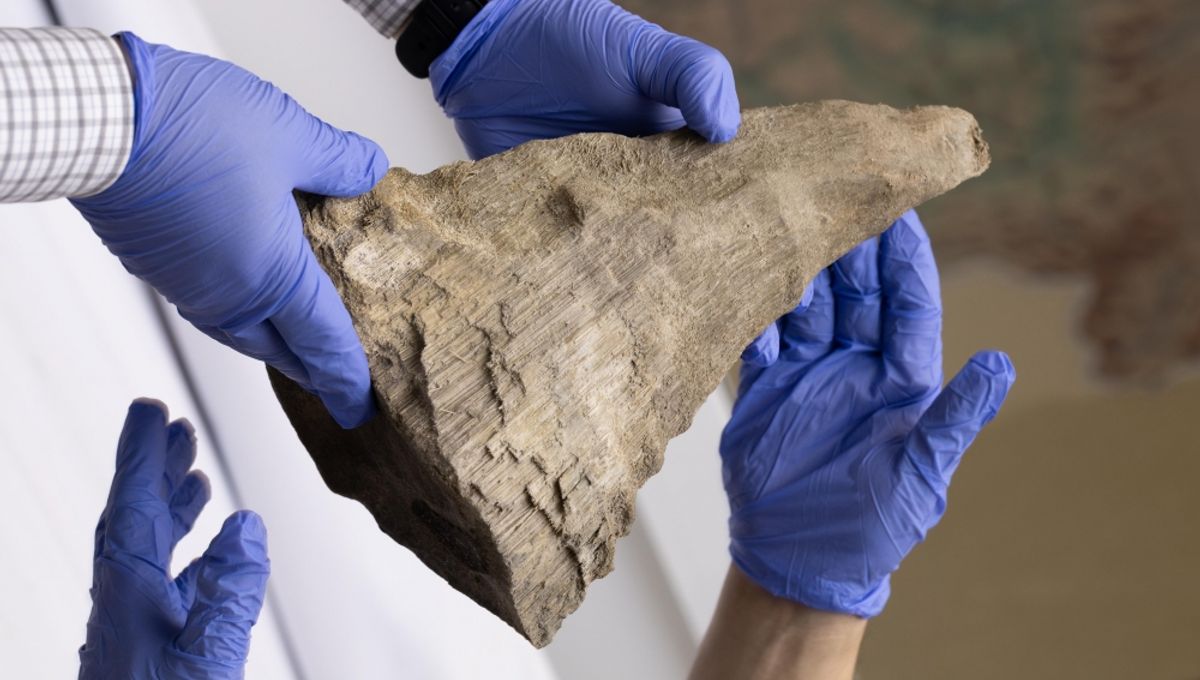
The mummified remains of an extinct woolly rhinoceros have been unearthed in Siberia. Frozen like a hunk of meat for thousands of years, the prehistoric animal still has its soft tissues intact, raising some intriguing scientific possibilities.
The discovery was recently made at a mining site in the Oymyakonsky District of the Sakha Republic in the Russian Far East, according to the North-Eastern Federal University (NEFU).
Researchers from the NEFU have recently returned from the site with the horn of the extinct beast, commenting that the rest of the carcass was being preserved and is set to be fully excavated in autumn.
“According to morphological parameters, it belonged to a mature individual. The exact biological age and sex of the animal will be established after a comprehensive examination of the carcass itself. Then we will be able to obtain data on anatomical and morphological features, geological age, nutrition, genetic links with previously studied finds, etc.,” Maxim Cheprasov, senior researcher and head of the laboratory of the NEFU Mammoth Museum, said in a statement.
While its age is currently unknown, it’s undoubtedly a relic from the last Ice Age. The woolly rhino inhabited northern Eurasia during the Pleistocene epoch until around 11,700 years ago when the Earth thawed and temperatures rose. Climate change played a role in their extinction, although some evidence suggests overhunting and human activity served as a one-two punch.
It’s the first time the NEFU Mammoth Museum has obtained any remains of a woolly rhino, although at least five other specimens with soft tissues have been found in the Sakha Republic since the late 18th century.
Getting their hands on the preserved specimen could be a huge help in the mission to better understand these creatures and the way Earth has changed since prehistoric times.
“This is a truly unique find that will allow us to study more deeply the history of the region, its ancient fauna, climate and geological conditions. We thank our partners for donating a valuable find and contributing to science. The donated corpse of a fossil rhinoceros is not just a valuable exhibit for the Mammoth Museum, but also an incredible resource for scientific research,” added Anatoly Nikolaev, Rector of NEFU.
A gaggle of other species, including mammoths, cave lions, and birds, have also been found in the frosty region. In 2021, a frozen wolf was discovered beneath around 40 meters (131 feet) of permafrost on the Tirekhtyakh River in Russia’s Far East. Thanks to its remarkable state of preservation, scientists at the NEFU Mammoth Museum were able to carry out an autopsy of its body and obtain some incredible insights into its life.
All of these discoveries raise the question of whether humans will ever find the frozen remains of Neanderthals, the “sister species” of Homo sapiens that inhabited parts of Eurasia that are still covered in ice from the Pleistocene epoch. Scientists think the chances are not super high – but it’s a very fascinating possibility.
Source Link: An Extinct Woolly Rhino With Soft Tissues Intact Has Been Unearthed In Siberia